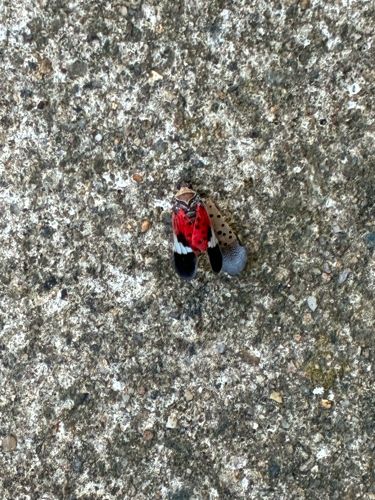Spotted Lanternfly
Scientific Name: Lycorma delicatula
Order & Family: Hemiptera, Fulgoridae
Size: Adults are approximately 2.5 cm (1 inch) long and 1.25 cm (0.5 inch) wide.

Natural Habitat
Originally from Asia, introduced to North America. Found in agricultural areas (vineyards, orchards), forests, and urban/suburban environments. Often found on trees like Tree of Heaven (Ailanthus altissima), grapevines, maples, and a variety of fruit trees.
Diet & Feeding
Feeds on the sap of over 70 different plant species, especially woody plants. They use their piercing-sucking mouthparts to extract sap, weakening the host plant.
Behavior Patterns
Adults are active from late summer through late fall. They lay egg masses, covered with a mud-like substance, on almost any flat surface (trees, rocks, vehicles, outdoor furniture). Nymphs hatch in spring and go through several instars before becoming adults. They often aggregate in large numbers on host plants. When disturbed, they may hop or quickly fly short distances.
Risks & Benefits
Significant invasive pest. Risks include severe damage to agricultural crops (especially grapes, hops, and fruit trees) and ornamental plants by feeding and excretions of honeydew. Honeydew promotes the growth of sooty mold, which can cover plants, reducing photosynthesis and fruit quality. No direct benefits to the ecosystem in invaded regions; they pose a severe threat to local ecosystems and industries.
Identified on: 9/24/2025